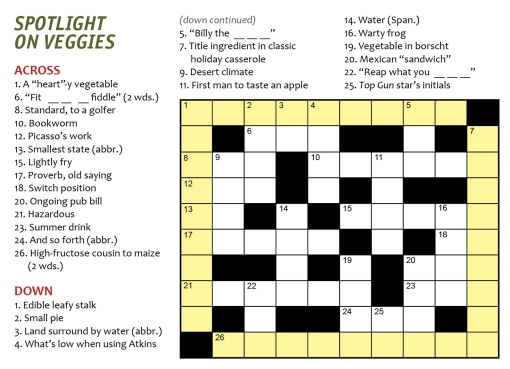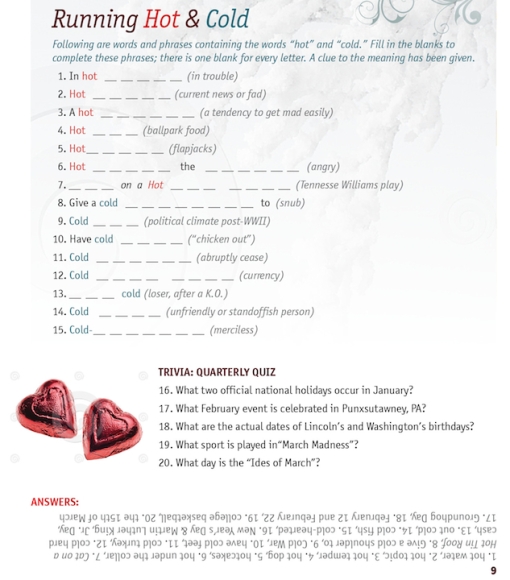OnCenter, Montclair Public Library’s magazine; this issue’s theme is “finding community.”
(IN BRIEF)
TRENDING
18th Century e-device prediction
1771 The demise of printed books was predicted as early as 1771, when French visionary Louis-Sébastien Mercier’s book The Year 2440 detailed a world in which the massive holdings of the Royal Library are condensed into a single volume. His description of that volume was “eerily like the description of an iPod.”
So you got a new e-device: now what?
The library offers the Montclair community a variety of free materials, including
downloadable music, electronic audiobooks and ebooks. Residents can schedule an appointment with a librarian or drop by the Main Library for instruction on using any of the library’s resources on their device. For more information about electronic resources at the Montclair Public Library, call (973) 744-0500 ext. 2235 or visit http://www.montclairpubliclibrary.org.
No, a MakerSpace is not an item sold in The Container Store
Wikipedia defines a MakerSpace as “…a community-operated workspace where people with common interests, often in computers, technology, science, digital art or electronic art, can meet, socialize and/or collaborate.” The common denominator is collective creativity, whether the emphasis is on traditional hand tools or digital tools, arts & crafts or technology. MakerSpaces are opening up in libraries, schools, community centers and other organizations who embrace this kind of opportunity for community engagement and learning. Montclair Public Library will soon be opeaning a MakerSpace in the Youth Services area. It will feature a 3D printer, sewing machine, badge-maker, crafts materials, A high-end digital workstation and more. There will be monthly MakerSpace open sessions as well as special sessions that may focus on teens, child + parent, technology, crafts, design, etc. Watch the web page, Facebook and newsletter for the grand opening!
GET INVOLVED
The library as a community gathering space
Libraries have always been repositories for books and sources of information. They are now becoming de facto community centers, where members of the community gather for educational, entertainment, enrichment and social interaction. The Montclair Public Library offers many opportunities for members of the community to join regularly-scheduled groups and gatherings: Bridge Group, Chess Workshop, The Write Group, Current Events Discussion Group, Knitters Group, T’ai Chi and Tea, Toddler Time, Babies in the Library, Family Storytime, Storytime en Español, Books & Bites Reading Clubs, Mother Goose Storytime, Homeschool Meetings, Minecraft, Teen Advisory Board…and more! Check out the offerings on the website and find what matches your schedule and interests.
A tribute in brick
Did you realize that you can literally pave the way to a successful future for your community library? The MPL Foundation offers the opportunity for you to recognize or commemorate a person or event with an engraved brick paver on the plaza in front of the library … a unique way to go down in Montclair history.
DID YOU KNOW?
1893 The year that the Montclair Public Library was established as a free public library was a banner year within the community and around the country. Katharine Lee Bates wrote America the Beautiful and Colorado accepted women’s suffrage. Cracker Jack, Cream of Wheat, the ferris wheel and the electric car (really!) made their debuts. Closer to home, Thomas Edison set up the first movie studio in West Orange and Montclair was building community: In addition to the library, new establishments include Saunders Hardware, the Bank of America Montclair Center branch, the Montclair Golf Club and Upper Montclair’s Mountain Avenue Station. Also, Montclair artist George Innis produced some of his finest works with Montclair as inspiration, including Sunburst, November Montclair and Hazy Morning. Fourteen of his works were exhibited in the World’s Columbian Exposition (the Chicago World’s Fair).
1942 In February, 1942, the Montclair Public Library became the first public library in the United States to have a computerized circulation system. The International Business Machines Corporation (IBM) provided the Library with the first‑ever punch card data processing system and equipment to record the loan and return of books. Librarians from all over the world visited Montclair to witness this pioneering venture.
CELEBRATING OUR DIVERSITY
Cuentitos: ¡Storytime en Español!
The library now offers a bilingual storytime for ages 2–6. Check the web site and newsletter for dates and times. Enjoy a storytime session of books in Spanish, and bilingual English and Spanish texts. Spanish speakers and non-Spanish speakers welcome!
Black History Month Celebration
MADLOM Drum & Dance and Author Rita Williams-Garcia Celebrate Black History Month on Saturday, February 22 at 2 p.m. with a drum and dance performance by local MADLOM students. All ages are welcome. Registration required. After the performance, award-winning author Rita Williams-Garcia speaks. Author of One Crazy Summer and P.S. Be Eleven, Williams-Garcia is known for realistic portrayals of teens of color. Her works have been recognized by the Coretta Scott King Award Committee, American Library Association, and Parents’ Choice, among others. Books will be available for purchase, courtesy of Watchung Booksellers.
@THE LIBRARY
“Crazy 8s Club” bedtime math
Both parental instincts and neural research recognize the “brainy benefits” of bedtime stories. Parents might want to consider adding “bedtime math” to the daily routine. The Crazy 8s Club is a high-energy math club that can start getting kids fired up about math. Who would’t love “glow in the dark geometry,” “spy training,” or “toilet paper Olympics”? The club meets Mondays at 4:30 through March 10.
Consumer Reports online for free
Anyone with a Montclair Public Library card can now access Consumer Reports online. This library-funded subscription provides expert ratings on anything from digital cameras to snow blowers to toys. With the popularity of the print edition in the library, this online service guarantees that library patrons will have access to product reviews 24/7.
Every ’zine is an e-zine with Zinio
The library announce a new service: access to Zinio, a digital magazine app available on mobile devices with more than a hundred magazines.
Getting the community reading
Summer is a time for reading…for everyone! “Literary Elements” is the theme for the 2014 Summer Reading Program combining science and literature in a variety of programs sure to pique your interest. Come to a stargazing night, learn the science behind Star Trek or discover the Golden Ratio. Read some of today’s best science writing, learn to write your own science fiction tale, and enjoy a series of science fiction films.
__________________
FEATURE STORY:
YOGI BERRA’S LEGACY OF SERVICE
Team spirit, community spirit
Basketball superstar Charles Barkley famously claimed, “I’m not paid to be a role model.” Fortunately for Montclair, Yogi Berra does not share that opinion. He embraces his leadership role in the local community and community-
at-large, and embodies the concept of “role model.”
And we are richer for it.
It would be easy to consider Yogi Berra’s finest legacy to be his sports accomplishments as a player, coach and manager. His legacy is impressive: Berra is one of only four players to be named the Most Valuable Player of the American League three times and is one of seven managers to lead both American and National League teams to the World Series. Berra appeared in 21 World Series and was elected to the Baseball Hall of Fame in 1972. He is widely regarded as one of the greatest catchers in baseball history and was named to the Major League Baseball All-Century Team in a vote by fans in 1999.
It would be equally easy to consider Berra’s greatest legacy to be that of an
“accidental philosopher,” as he is perhaps the most-quoted athlete of all time.
He is known for his delightfully-mangled “Yogi-isms:” “90% of the game is half mental.”
However, it is Berra’s enduring career as a role model that is his finest legacy. Yogi does not give back to the community because he is paid to do so, or shamed or bullied into doing so. He does not serve as a role model as a publicity stunt or self-aggrandizing opportunity. He engages in service to the local and wider community because it is the right thing to do…it is what he expects of himself. And, to use Yogi’s own words, “It ain’t over ’til it’s over.” At the age of 88, he is still building that legacy of service.
From Norfolk to Normandy
In 1943, the New York Yankees signed Berra and sent him to Norfolk in the Class D Virginia League. A year later, he had put his career on hold, joined the Navy and was participating in the D-Day invasion at Normandy as a gunner’s mate on a rocket launching boat. Based about 300 yards off-shore at Utah Beach, the rocket launching boats provided cover for the landing crafts.
His Navy service earned him numerous awards, including the Purple Heart, a
distinguished Unit Citation, two battle stars, a European Theatre of Operations ribbon, a Good Conduct medal and Normandy’s Médaille de Jubilé. Sixty years after the war, he received the Lone Sailor award from the U.S. Navy Memorial, an honor given to sailors who are “living examples of how service to country changes lives and helps develop leaders.” Most recently, he was a recipient of the inaugural Bob Feller Act of Valor award, recognizing the military service of baseball hall-of-famers.
An all-’round great guy, on the diamond and off
During his years as a ballplayer, Yogi Berra was noted for being an all-’round nice guy, demonstrating traits like sportsmanship, respect, perseverance, loyalty and tolerance. He was one of the ball players who readily accepted the black players after the reintegration of baseball. Both ballplayers and the public like him …immensely. Pitcher Whitey Ford said “I’ve heard all the Yogi stories and been involved in some, but when I think of Yogi, I realize there’s so much to him—he has a great family, he’s honest, and he helps his friends any way he can. The only thing bad I can say about Yogi is he never bought me a beer.”
A willing role model
Yogi has long embraced the opportunity to be a role model to young people. He has repeatedly demonstrated his willingness to lend his name, fame and time to causes, to give back to the community and inspire the next generation. In Montclair, these causes embraced by Berra and his wife Carmen have included the Montclair Art Museum, the Salvation Army, scouting, Mountainside Hospital, the YMCA, the Montclair Public Library and the Clara Maas Medical Center Foundation, to name a few. Beyond his local community, his causes have been as widespread as the Hazleton Integration Project in Tampa, the East Hampton Artists & Writers softball fundraiser in New York, Realizing the Dream in Atlanta and the Bob Hope Classic in Laquinta, California. Berra’s legacy was celebrated at the Baseball Assistance Team’s 24th annual “Going to Bat for B.A.T.” Fundraising Dinner. At the event, Berra’s son, baseball player Dale Berra, had this to say: “There’s something distinctly different about my dad. People can’t put their finger on it. It’s quite obvious to me what it is. And the word is humility. It’s what makes him who he is. It’s what makes every person who meets him say, ‘My God, that’s one of the greatest baseball players in history, and he’s no different than the guy across the street.’”
Berra’s legacy continues
The values reflected in his life and accomplishments—respect, tolerance, and sportsmanship—inspired the creation of the Yogi Berra Museum & Learning Center, located on the campus of Montclair State University, in 1998.
The Yogi Berra Museum is the best opportunity of ensuring that Yogi’s legacy
of “giving back” endures well beyond his lifetime. While the permanent exhibits
primarily recount and celebrate his athletic accomplishments, traveling exhibits,
programs and camps reflect his dedication to giving back to the community and to promoting the concepts of respect, sportsmanship, integrity and service.
In addition to highlighting Berra’s baseball legacy, the museum’s permanent collection has displays on the influence of immigration and integration on baseball and baseball’s role during WWII. Visitors can discover Berra’s unique responses to bullying and explore an interactive section about the willingness to dream, showcasing the stories of children who became groundbreaking athletes.
In recent years, a grant from Investors Bank has enabled the museum to
develop a high school team captains’ workshop. The workshop provides leadership techniques to help captains make the whole high school sports experience inclusive and rewarding, while ensuring that hazing and bullying will never occur on their watch. Other museum programs include baseball and softball camps for kids from underserved communities and a collaboration with Scholastic on a character development curriculum.
Berra is still actively involved with the museum, frequently attending museum events and giving input on museum programs and exhibits. Berra’s annual celebrity golf tournament benefits the museum.
In his 88 years (and still going!), Yogi Berra has established quite a legacy: playing baseball (and golf), loving his family, serving his country and giving back
to his community.
To use Yogi Berra’s own words: “The future ain’t what it used to be”
You are so right, Yogi. You’ve made certain that future is better. Many thanks!
MPL has nearly 1000 materials related to baseball, including books, audiobooks and movies. Come check out our baseball fiction or browse the 796s for some great reads. And get yourself ready for opening day by watching a classic like The Natural or The Sandlot!
SIDEBAR
YOGI-ISMS
It ain’t over ’til it’s over.
It’s like deja vu all over again.
The future ain’t what it used to be.
A nickel ain’t worth a dime anymore.
He hits from both sides of the plate. He’s amphibious.
Never answer anonymous letters.
Half the lies they tell about me aren’t true.
When you come to a fork in the road….Take it .
I don’t mean to be funny.
COMPANION ARTICLE:
Not-to-be-missed museum traveling exhibits:
Smithsonian Hometown Sports Exhibit
Hometown sports are more than just games. They’re a big part of our culture, of what we do and who we are. The Yogi Berra Museum & Learning Center is currently hosting the new Smithsonian traveling exhibit “Hometown Teams” and feature a series of exciting related programs.
Championing respect, combatting prejudice
Athlete Ally is a leading non-profit organization dedicated to encouraging athletes, coaches, parents, fans and other members of the sports community to respect all individuals involved in sports, regardless of perceived or actual sexual orientation or gender identity or expression. Athlete Ally works with professional, college and high school sports figures to use their influence to help stop anti-gay bullying and discrimination by championing respect, camaraderie and inclusion.
The Allyship exhibit at the Yogi Berra Museum examines the evolution of societal attitudes around inclusion and acceptance in sports, from Jackie Robinson breaking the color barrier in baseball in 1947 to the courageous strides made by women in the sports world, up to the current social movement to end homophobia in sports. The exhibit focuses on the critical role played by athlete allies in accepting and respecting all athletes.


